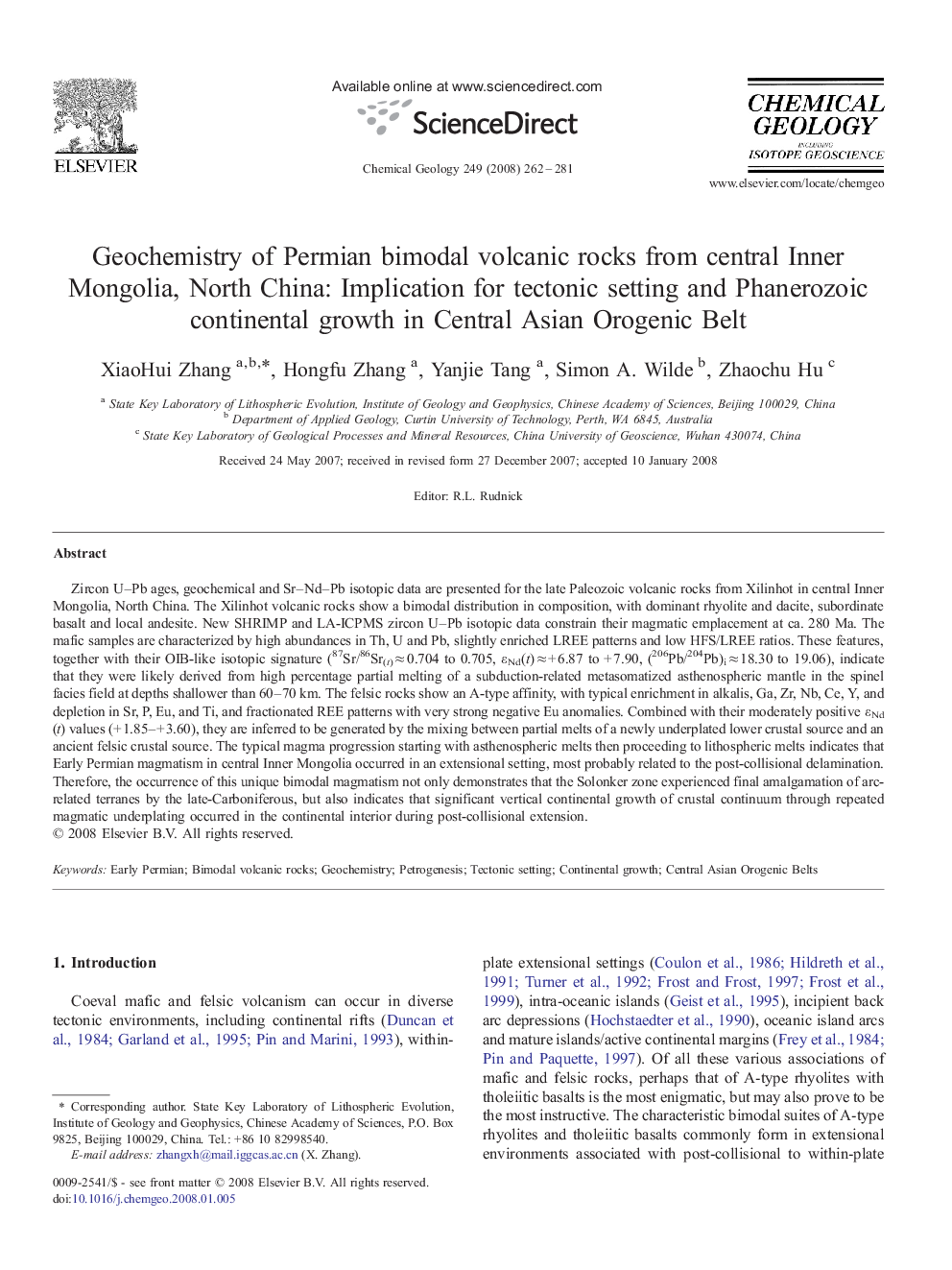| کد مقاله | کد نشریه | سال انتشار | مقاله انگلیسی | نسخه تمام متن |
|---|---|---|---|---|
| 4700767 | 1637731 | 2008 | 20 صفحه PDF | دانلود رایگان |

Zircon U–Pb ages, geochemical and Sr–Nd–Pb isotopic data are presented for the late Paleozoic volcanic rocks from Xilinhot in central Inner Mongolia, North China. The Xilinhot volcanic rocks show a bimodal distribution in composition, with dominant rhyolite and dacite, subordinate basalt and local andesite. New SHRIMP and LA-ICPMS zircon U–Pb isotopic data constrain their magmatic emplacement at ca. 280 Ma. The mafic samples are characterized by high abundances in Th, U and Pb, slightly enriched LREE patterns and low HFS/LREE ratios. These features, together with their OIB-like isotopic signature (87Sr/86Sr(t) ≈ 0.704 to 0.705, εNd(t) ≈ + 6.87 to + 7.90, (206Pb/204Pb)i ≈ 18.30 to 19.06), indicate that they were likely derived from high percentage partial melting of a subduction-related metasomatized asthenospheric mantle in the spinel facies field at depths shallower than 60–70 km. The felsic rocks show an A-type affinity, with typical enrichment in alkalis, Ga, Zr, Nb, Ce, Y, and depletion in Sr, P, Eu, and Ti, and fractionated REE patterns with very strong negative Eu anomalies. Combined with their moderately positive εNd(t) values (+ 1.85–+ 3.60), they are inferred to be generated by the mixing between partial melts of a newly underplated lower crustal source and an ancient felsic crustal source. The typical magma progression starting with asthenospheric melts then proceeding to lithospheric melts indicates that Early Permian magmatism in central Inner Mongolia occurred in an extensional setting, most probably related to the post-collisional delamination. Therefore, the occurrence of this unique bimodal magmatism not only demonstrates that the Solonker zone experienced final amalgamation of arc-related terranes by the late-Carboniferous, but also indicates that significant vertical continental growth of crustal continuum through repeated magmatic underplating occurred in the continental interior during post-collisional extension.
Journal: Chemical Geology - Volume 249, Issues 3–4, 15 April 2008, Pages 262–281